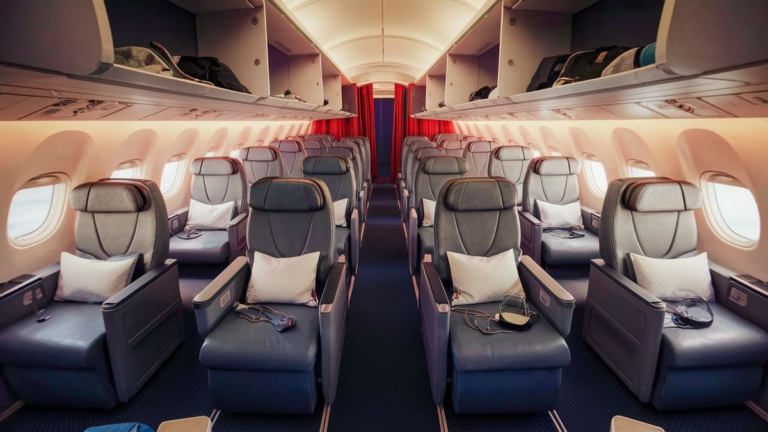Choosing the optimal seat on a plane can significantly impact your travel experience. Whether you’re a frequent flyer or an occasional traveler, understanding the dynamics of seat selection can make your journey more comfortable and enjoyable.
The Front Row Advantage
For those seeking extra legroom and a quicker exit upon arrival, the front row seats, often located near the emergency exits, are a prime choice. These seats offer more space and a sense of exclusivity, making them popular among passengers who prioritize comfort and efficiency.
Window or Aisle: The Eternal Dilemma
Deciding between a window seat and an aisle seat is a perpetual debate among travelers. Window seats provide scenic views and a cozy corner to lean against, while aisle seats offer easy access to the restroom and the freedom to stretch your legs without disturbing fellow passengers.
Escape the Noise: The Quiet Zone
Some airlines now feature designated quiet zones, often situated towards the front of the plane. These sections cater to passengers seeking a peaceful environment, away from the hustle and bustle of the main cabin. Choosing seats in the quiet zone ensures a more serene and relaxing journey.
Consider the Wing Position
The position of the seat in relation to the wings can impact the level of turbulence felt during the flight. Seats over the wings tend to experience less turbulence, providing a smoother ride. If you’re prone to motion sickness, opting for a seat in this area might be a wise choice.
Exit Rows: A Blessing or a Curse?
While exit row seats offer ample legroom, they come with added responsibilities. Passengers in these seats must be physically capable of assisting in an emergency evacuation. If you’re up for the task, the extra space in exit rows can make a considerable difference in your in-flight comfort.
Back Row Blues?
The back row of the plane is often overlooked, but it has its perks. With fewer passengers passing by, the back row can provide a quieter atmosphere. Additionally, some airlines reserve back row seats for passengers who prefer to be closer to the restroom facilities.
Ultimately, the best seat on a plane depends on your personal preferences and priorities. Whether you prioritize legroom, quick access to amenities, or a quiet environment, understanding the nuances of seat selection can enhance your overall travel experience.
Frequently Asked Questions
1. Can I reserve a seat in the quiet zone in advance?
Yes, many airlines allow passengers to select seats, including those in designated quiet zones, during the booking process. Check with your airline for specific details on seat selection options.
2. Are there any drawbacks to sitting in the back row?
While the back row may offer a quieter atmosphere, it’s essential to consider its proximity to restrooms and potential engine noise. If these factors don’t bother you, the back row can be a hidden gem for a more peaceful journey.
| Seat Type | Advantages | Considerations |
|---|---|---|
| Front Row | Extra legroom, quick exit | May be near emergency exits |
| Window Seat | Scenic views, cozy corner | Limited mobility, less access |
| Aisle Seat | Easy restroom access, legroom | Disturbance from passing passengers |
| Quiet Zone | Peaceful environment | Availability may vary by airline |
| Exit Row | Ample legroom | Responsibility for emergency assistance |
| Back Row | Quieter atmosphere | Proximity to restrooms and engine noise |
3. How does the wing position affect turbulence?
Seats over the wings experience less turbulence, providing a smoother ride. If you’re prone to motion sickness, choosing a seat in this area can contribute to a more comfortable flight experience.
Exploring Unique Seating Considerations
Aside from the commonly discussed factors, there are unique aspects to consider when selecting a plane seat. Some airlines offer specialty seating arrangements, such as family-friendly zones or business class upgrades, providing additional choices tailored to specific preferences.
See also:






